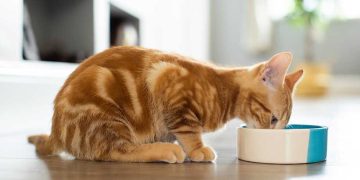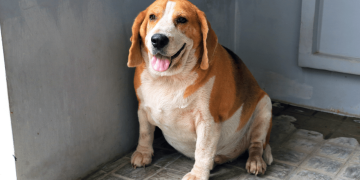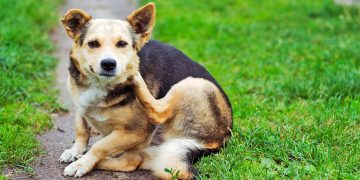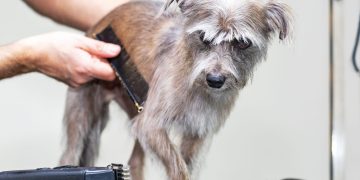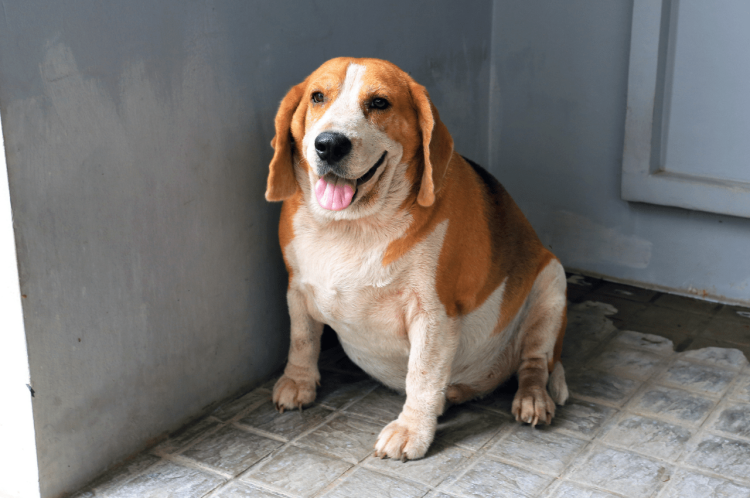Obesity is one of the most common health problems affecting pets today. Whether it’s a chubby dog lounging on the couch or a fluffy cat napping in the sun, we often think of our pets’ extra weight as harmless, even cute. However, the reality is that obesity can have serious, long-term consequences on your pet’s health and well-being. Just like in humans, obesity in pets increases the risk of various medical conditions, from diabetes to heart disease, joint problems, and even cancer. Therefore, managing your pet’s weight is essential not only for their appearance but, more importantly, for their overall health.
In this article, we will discuss the dangers of obesity in pets, share practical tips for maintaining a healthy weight through diet and exercise, and provide guidance on creating a tailored weight management plan for your pet. By understanding how to properly manage your pet’s weight, you can ensure they live a long, healthy, and active life.
Understanding the Dangers of Obesity in Pets
Obesity is defined as an excessive accumulation of body fat that impairs your pet’s health. While many pets are simply overweight due to overfeeding or lack of exercise, it is important to recognize that obesity can have a significant impact on your pet’s health.
1. Increased Risk of Chronic Diseases
Obesity is a major contributing factor to many chronic diseases in pets. Some of the most common conditions associated with obesity include:
- Diabetes: Just like in humans, obesity in pets can lead to insulin resistance, a precursor to diabetes. Overweight pets are more likely to develop type 2 diabetes, which can be costly to manage and can severely impact your pet’s quality of life.
- Joint Problems and Arthritis: Carrying excess weight places additional stress on your pet’s joints, leading to pain, discomfort, and even long-term conditions such as arthritis. This is particularly problematic in large dog breeds and older pets.
- Heart Disease: Obesity places extra strain on the heart, making it harder for your pet to pump blood efficiently. Overweight pets are at a higher risk for heart disease, which can lead to heart failure and other cardiovascular complications.
- Liver Disease: Fat buildup around the liver can impair its function, leading to liver disease. This is common in obese cats, who may develop a condition called hepatic lipidosis, a potentially life-threatening disease.
- Respiratory Issues: Extra fat, especially around the chest and abdomen, can make it difficult for pets to breathe, leading to respiratory problems. Overweight pets are also more prone to conditions like asthma and bronchitis, which are exacerbated by obesity.
2. Decreased Lifespan and Reduced Quality of Life
Obesity in pets can lead to a shorter lifespan. Studies have shown that overweight dogs have a significantly higher risk of early death compared to their healthy-weight counterparts. In addition to a decreased lifespan, obese pets often experience a lower quality of life due to the discomfort and limitations caused by their weight. Overweight pets may struggle to move, have less energy, and experience more pain and discomfort, which affects their ability to play and interact with their owners.
3. Behavioral Changes
Pets that are obese often suffer from a lack of energy and may become more lethargic or depressed. They might not have the stamina to go for walks or engage in interactive play. This can lead to behavioral changes, such as increased irritability, boredom, and even aggression. Additionally, obesity can affect your pet’s mental health, leading to anxiety and stress, particularly in pets who are restricted in movement or playtime due to weight-related issues.
Tips for Maintaining a Healthy Weight Through Diet and Exercise
The good news is that obesity in pets is preventable and manageable through a combination of proper diet and regular exercise. By taking an active role in managing your pet’s health, you can help them maintain a healthy weight and prevent the harmful effects of obesity.
1. Dietary Adjustments
Diet plays a crucial role in managing your pet’s weight. The right food, portion sizes, and feeding schedule can make a significant difference in preventing and managing obesity.
- Choose a High-Quality, Nutrient-Rich Pet Food: Start by selecting a high-quality, balanced pet food that is appropriate for your pet’s age, size, and activity level. Look for foods that list whole meat as the first ingredient, as well as a balance of protein, fat, and fiber. Avoid foods with fillers like corn, soy, and artificial preservatives.
- Portion Control: Overfeeding is one of the primary causes of obesity in pets. Follow the recommended portion sizes on your pet’s food packaging, but remember that these recommendations are often based on ideal weight, not overweight animals. Consult your vet for more precise portion sizes based on your pet’s current weight, breed, and activity level.
- Meal Timing and Frequency: It’s important to establish a regular feeding routine for your pet. Avoid free-feeding, which is when food is left out for your pet to graze on throughout the day. Instead, feed your pet at set times and measure their food to avoid overeating.
- Avoid Table Scraps and Human Food: Many pet owners inadvertently contribute to their pet’s weight gain by offering table scraps, treats, or human food. While it may seem harmless to give your pet a bite of your meal, these foods can be high in calories and unhealthy for pets. Stick to pet-safe treats and limit the number of treats given.
- Low-Calorie Treats: If your pet enjoys treats, consider offering low-calorie alternatives like baby carrots, green beans, or pieces of apple. There are also specially designed low-calorie pet treats available that won’t contribute to weight gain.
- Consider Special Diets for Overweight Pets: Some pets may require special diets designed to promote weight loss or weight maintenance. These foods are often higher in fiber and protein, which help pets feel full while reducing calorie intake. Your vet can help you determine whether a weight-loss formula is appropriate for your pet.
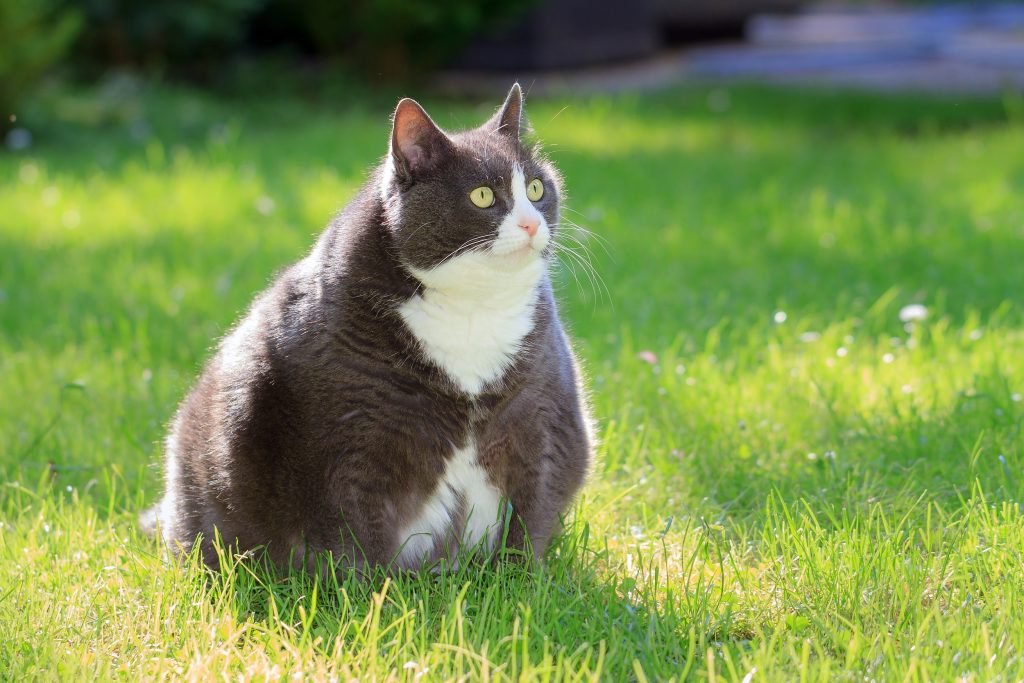
2. Regular Exercise and Activity
Exercise is an essential component of weight management for pets. Not only does it help burn calories, but it also strengthens muscles, improves cardiovascular health, and provides mental stimulation. Regular physical activity can also help prevent boredom and behavioral issues associated with obesity.
- Daily Walks: One of the simplest and most effective ways to help your pet lose weight is by taking them on daily walks. The amount of exercise your pet needs will vary depending on their breed, age, and health, but most dogs benefit from at least 30 minutes of exercise a day. Cats can also be encouraged to exercise through interactive play with toys such as laser pointers, feather wands, or puzzle feeders.
- Interactive Play: Play is essential for pets, especially cats and dogs, as it engages their minds and bodies. Interactive toys like fetch balls, tug-of-war ropes, and puzzle toys can help stimulate your pet while providing a fun and effective workout. For indoor pets, consider providing cat trees, scratching posts, or toys that encourage climbing and pouncing.
- High-Energy Activities: If your dog is active and enjoys running or fetch, these activities are great ways to burn calories. Consider taking your dog to a dog park or allowing them to run off-leash in a secure, safe environment. For cats, use toys that mimic hunting behaviors, such as wand toys or laser pointers, to keep them active.
- Exercise in Stages: If your pet is already overweight, start with gentle exercise and gradually increase the intensity as they build stamina. Overexerting an obese pet can lead to injury or discomfort, so it’s essential to monitor their physical limits.
- Regular Playtime for Mental Stimulation: Mental exercise is just as important as physical activity for your pet’s overall health. Use puzzle toys, food-dispensing toys, and training exercises to keep your pet’s mind sharp and engaged. This will help prevent boredom, which can lead to overeating or destructive behavior.
3. Health Monitoring and Veterinary Support
While diet and exercise are essential, regular veterinary checkups are crucial for monitoring your pet’s weight and overall health. Your vet can help assess your pet’s body condition score (BCS) and determine if they are underweight, at an ideal weight, or overweight. Regular vet visits also provide an opportunity for your vet to address any medical issues contributing to weight gain, such as hypothyroidism or other metabolic disorders.
If your pet is overweight, your vet may recommend a customized weight loss program, which could include a combination of diet changes, exercise routines, and medications. Your vet can also help track your pet’s progress and make adjustments as necessary to ensure successful weight management.
How to Create a Tailored Weight Management Plan for Your Pet
Creating a personalized weight management plan for your pet involves assessing their unique needs, setting realistic goals, and providing consistent monitoring. Here’s how to get started:
- Consult Your Veterinarian: Before starting any weight management plan, consult your vet for a health assessment. Your vet can help you determine your pet’s ideal weight, assess their health status, and rule out underlying medical conditions.
- Set Realistic Goals: Weight loss for pets should be gradual and steady. Aim for a weight loss of 1-2% of their body weight per week. Rapid weight loss can be harmful to pets, so be patient and adjust expectations accordingly.
- Create a Diet Plan: Based on your pet’s ideal weight and caloric needs, work with your vet to create a diet plan. This plan should include the right food, portion sizes, and feeding schedule to ensure your pet is getting the nutrients they need while managing their weight.
- Establish an Exercise Routine: Develop
a balanced exercise routine that fits your pet’s breed, age, and fitness level. Regular physical activity is essential for weight loss, so aim for daily sessions of exercise and play.
- Track Progress and Adjust: Keep track of your pet’s weight and health progress by weighing them regularly and observing their behavior. Adjust their diet or exercise plan as needed, and always consult your vet for guidance.
Conclusion
Obesity is a serious health issue for pets, but it’s preventable and manageable with the right approach. By understanding the dangers of obesity, making dietary adjustments, incorporating regular exercise, and creating a tailored weight management plan, you can help your pet achieve and maintain a healthy weight. A healthy pet is a happy pet, and by taking steps now, you can ensure your pet enjoys a long, active, and fulfilling life by your side.









